-
EXECUTIVE SUMMARY
-
Market Overview
-
Key Findings
-
Market Segmentation
-
Competitive Landscape
-
Challenges and Opportunities
-
Future Outlook
-
MARKET
-
INTRODUCTION
-
Definition
-
Scope of the study
- Research
- Assumption
- Limitations
-
Objective
-
RESEARCH METHODOLOGY
-
Overview
-
Data Mining
-
Secondary Research
- Primary Interviews and Information Gathering Process
- Breakdown of Primary Respondents
-
Primary Research
-
Forecasting Model
- Bottom-Up Approach
- Top-Down Approach
-
Market Size Estimation
-
Data Triangulation
-
Validation
-
MARKET DYNAMICS
-
Overview
-
Drivers
-
Restraints
-
Opportunities
-
MARKET FACTOR ANALYSIS
-
Value chain Analysis
-
Porter's
- Bargaining Power of Suppliers
- Bargaining
- Threat of New Entrants
- Threat of Substitutes
- Intensity of Rivalry
-
Five Forces Analysis
-
Power of Buyers
-
COVID-19 Impact Analysis
- Regional Impact
- Opportunity and
-
Market Impact Analysis
-
Threat Analysis
-
SMART MIRROR MARKET, BY APPLICATION (USD BILLION)
-
Beauty and Personal Care
-
Healthcare
-
Automotive
-
Retail
-
Home Automation
-
SMART MIRROR MARKET, BY TECHNOLOGY (USD
-
BILLION)
-
LCD
-
LED
-
OLED
-
Projection
-
Virtual Reality
-
SMART MIRROR MARKET, BY END USE (USD BILLION)
-
Residential
-
Commercial
-
Automotive
-
SMART MIRROR
-
MARKET, BY CONNECTIVITY (USD BILLION)
-
Wi-Fi
-
Bluetooth
-
NFC
-
Wired
-
SMART MIRROR MARKET, BY REGIONAL (USD BILLION)
-
North America
- US
- Canada
-
Europe
- Germany
- UK
- France
- Russia
- Italy
- Spain
- Rest of Europe
- China
- India
- Japan
- South
- Malaysia
- Thailand
- Indonesia
- Rest of APAC
-
APAC
-
Korea
-
South America
- Brazil
- Argentina
- Rest of South America
-
Mexico
-
MEA
- GCC Countries
- South Africa
- Rest of MEA
-
COMPETITIVE LANDSCAPE
-
Overview
-
Competitive Analysis
-
Market share Analysis
-
Major Growth Strategy in the Smart
-
Mirror Market
-
Competitive Benchmarking
-
Leading Players in
-
Terms of Number of Developments in the Smart Mirror Market
-
Key developments
- New Product Launch/Service Deployment
- Joint Ventures
-
and growth strategies
-
Merger & Acquisitions
-
Major Players
- Sales and Operating Income
- Major Players
-
Financial Matrix
-
R&D Expenditure. 2023
-
COMPANY PROFILES
-
Panasonic
- Products Offered
- Key Developments
- SWOT Analysis
- Key Strategies
-
Financial Overview
-
Kohler
- Financial Overview
- Products Offered
- Key Developments
- SWOT Analysis
- Key Strategies
-
Corning
- Financial Overview
- Products Offered
- Key Developments
- SWOT Analysis
- Key Strategies
-
Capstone Connected
- Financial Overview
- Products Offered
- SWOT Analysis
- Key Strategies
- Financial Overview
- Products Offered
- SWOT Analysis
- Key Strategies
- Financial Overview
- Products Offered
- SWOT Analysis
- Key Strategies
- Financial Overview
- Products Offered
- SWOT Analysis
- Key Strategies
- Financial Overview
- Products Offered
- SWOT Analysis
- Key Strategies
- Financial Overview
- Products Offered
- SWOT Analysis
- Key Strategies
- Financial Overview
- Products Offered
- SWOT Analysis
- Key Strategies
-
Home
-
Key Developments
-
Mirrorvue
-
Key Developments
-
Safelight
-
Key Developments
-
HiMirror
-
Key Developments
-
Samsung
-
Key Developments
-
MIRROR
-
Key Developments
-
Gmirror
-
Key Developments
-
AdNotam
- Financial Overview
- Products Offered
- Key Developments
- SWOT Analysis
- Key
-
Strategies
-
LG Electronics
- Financial Overview
- Key Developments
- SWOT Analysis
- Key Strategies
-
Products Offered
-
LucidCam
- Financial Overview
- Products Offered
- Key Developments
- SWOT
- Key Strategies
-
Analysis
-
Xiaomi
- Financial
- Products Offered
- Key Developments
- Key Strategies
-
Overview
-
SWOT Analysis
-
Evervue
- Products Offered
- Key Developments
- SWOT Analysis
- Key Strategies
-
Financial Overview
-
APPENDIX
-
References
-
Related Reports
-
LIST OF TABLES
-
LIST OF ASSUMPTIONS
-
NORTH AMERICA SMART MIRROR MARKET
-
SIZE ESTIMATES & FORECAST, BY APPLICATION, 2019-2035 (USD BILLIONS)
-
TABLE
-
NORTH AMERICA SMART MIRROR MARKET SIZE ESTIMATES & FORECAST, BY TECHNOLOGY,
-
NORTH AMERICA SMART MIRROR MARKET SIZE ESTIMATES
-
& FORECAST, BY END USE, 2019-2035 (USD BILLIONS)
-
NORTH AMERICA
-
SMART MIRROR MARKET SIZE ESTIMATES & FORECAST, BY CONNECTIVITY, 2019-2035 (USD
-
BILLIONS)
-
NORTH AMERICA SMART MIRROR MARKET SIZE ESTIMATES &
-
FORECAST, BY REGIONAL, 2019-2035 (USD BILLIONS)
-
US SMART MIRROR MARKET
-
SIZE ESTIMATES & FORECAST, BY APPLICATION, 2019-2035 (USD BILLIONS)
-
TABLE
-
US SMART MIRROR MARKET SIZE ESTIMATES & FORECAST, BY TECHNOLOGY, 2019-2035
-
(USD BILLIONS)
-
US SMART MIRROR MARKET SIZE ESTIMATES & FORECAST,
-
BY END USE, 2019-2035 (USD BILLIONS)
-
US SMART MIRROR MARKET SIZE
-
ESTIMATES & FORECAST, BY CONNECTIVITY, 2019-2035 (USD BILLIONS)
-
TABLE
-
US SMART MIRROR MARKET SIZE ESTIMATES & FORECAST, BY REGIONAL, 2019-2035
-
(USD BILLIONS)
-
CANADA SMART MIRROR MARKET SIZE ESTIMATES & FORECAST,
-
BY APPLICATION, 2019-2035 (USD BILLIONS)
-
CANADA SMART MIRROR MARKET
-
SIZE ESTIMATES & FORECAST, BY TECHNOLOGY, 2019-2035 (USD BILLIONS)
-
TABLE
-
CANADA SMART MIRROR MARKET SIZE ESTIMATES & FORECAST, BY END USE, 2019-2035
-
(USD BILLIONS)
-
CANADA SMART MIRROR MARKET SIZE ESTIMATES & FORECAST,
-
BY CONNECTIVITY, 2019-2035 (USD BILLIONS)
-
CANADA SMART MIRROR MARKET
-
SIZE ESTIMATES & FORECAST, BY REGIONAL, 2019-2035 (USD BILLIONS)
-
TABLE
-
EUROPE SMART MIRROR MARKET SIZE ESTIMATES & FORECAST, BY APPLICATION, 2019-2035
-
(USD BILLIONS)
-
EUROPE SMART MIRROR MARKET SIZE ESTIMATES & FORECAST,
-
BY TECHNOLOGY, 2019-2035 (USD BILLIONS)
-
EUROPE SMART MIRROR MARKET
-
SIZE ESTIMATES & FORECAST, BY END USE, 2019-2035 (USD BILLIONS)
-
TABLE
-
EUROPE SMART MIRROR MARKET SIZE ESTIMATES & FORECAST, BY CONNECTIVITY, 2019-2035
-
(USD BILLIONS)
-
EUROPE SMART MIRROR MARKET SIZE ESTIMATES & FORECAST,
-
BY REGIONAL, 2019-2035 (USD BILLIONS)
-
GERMANY SMART MIRROR MARKET
-
SIZE ESTIMATES & FORECAST, BY APPLICATION, 2019-2035 (USD BILLIONS)
-
TABLE
-
GERMANY SMART MIRROR MARKET SIZE ESTIMATES & FORECAST, BY TECHNOLOGY, 2019-2035
-
(USD BILLIONS)
-
GERMANY SMART MIRROR MARKET SIZE ESTIMATES &
-
FORECAST, BY END USE, 2019-2035 (USD BILLIONS)
-
GERMANY SMART MIRROR
-
MARKET SIZE ESTIMATES & FORECAST, BY CONNECTIVITY, 2019-2035 (USD BILLIONS)
-
GERMANY SMART MIRROR MARKET SIZE ESTIMATES & FORECAST, BY REGIONAL,
-
UK SMART MIRROR MARKET SIZE ESTIMATES &
-
FORECAST, BY APPLICATION, 2019-2035 (USD BILLIONS)
-
UK SMART MIRROR
-
MARKET SIZE ESTIMATES & FORECAST, BY TECHNOLOGY, 2019-2035 (USD BILLIONS)
-
UK SMART MIRROR MARKET SIZE ESTIMATES & FORECAST, BY END USE, 2019-2035
-
(USD BILLIONS)
-
UK SMART MIRROR MARKET SIZE ESTIMATES & FORECAST,
-
BY CONNECTIVITY, 2019-2035 (USD BILLIONS)
-
UK SMART MIRROR MARKET
-
SIZE ESTIMATES & FORECAST, BY REGIONAL, 2019-2035 (USD BILLIONS)
-
TABLE
-
FRANCE SMART MIRROR MARKET SIZE ESTIMATES & FORECAST, BY APPLICATION, 2019-2035
-
(USD BILLIONS)
-
FRANCE SMART MIRROR MARKET SIZE ESTIMATES & FORECAST,
-
BY TECHNOLOGY, 2019-2035 (USD BILLIONS)
-
FRANCE SMART MIRROR MARKET
-
SIZE ESTIMATES & FORECAST, BY END USE, 2019-2035 (USD BILLIONS)
-
TABLE
-
FRANCE SMART MIRROR MARKET SIZE ESTIMATES & FORECAST, BY CONNECTIVITY, 2019-2035
-
(USD BILLIONS)
-
FRANCE SMART MIRROR MARKET SIZE ESTIMATES & FORECAST,
-
BY REGIONAL, 2019-2035 (USD BILLIONS)
-
RUSSIA SMART MIRROR MARKET
-
SIZE ESTIMATES & FORECAST, BY APPLICATION, 2019-2035 (USD BILLIONS)
-
TABLE
-
RUSSIA SMART MIRROR MARKET SIZE ESTIMATES & FORECAST, BY TECHNOLOGY, 2019-2035
-
(USD BILLIONS)
-
RUSSIA SMART MIRROR MARKET SIZE ESTIMATES & FORECAST,
-
BY END USE, 2019-2035 (USD BILLIONS)
-
RUSSIA SMART MIRROR MARKET
-
SIZE ESTIMATES & FORECAST, BY CONNECTIVITY, 2019-2035 (USD BILLIONS)
-
TABLE
-
RUSSIA SMART MIRROR MARKET SIZE ESTIMATES & FORECAST, BY REGIONAL, 2019-2035
-
(USD BILLIONS)
-
ITALY SMART MIRROR MARKET SIZE ESTIMATES & FORECAST,
-
BY APPLICATION, 2019-2035 (USD BILLIONS)
-
ITALY SMART MIRROR MARKET
-
SIZE ESTIMATES & FORECAST, BY TECHNOLOGY, 2019-2035 (USD BILLIONS)
-
TABLE
-
ITALY SMART MIRROR MARKET SIZE ESTIMATES & FORECAST, BY END USE, 2019-2035
-
(USD BILLIONS)
-
ITALY SMART MIRROR MARKET SIZE ESTIMATES & FORECAST,
-
BY CONNECTIVITY, 2019-2035 (USD BILLIONS)
-
ITALY SMART MIRROR MARKET
-
SIZE ESTIMATES & FORECAST, BY REGIONAL, 2019-2035 (USD BILLIONS)
-
TABLE
-
SPAIN SMART MIRROR MARKET SIZE ESTIMATES & FORECAST, BY APPLICATION, 2019-2035
-
(USD BILLIONS)
-
SPAIN SMART MIRROR MARKET SIZE ESTIMATES & FORECAST,
-
BY TECHNOLOGY, 2019-2035 (USD BILLIONS)
-
SPAIN SMART MIRROR MARKET
-
SIZE ESTIMATES & FORECAST, BY END USE, 2019-2035 (USD BILLIONS)
-
TABLE
-
SPAIN SMART MIRROR MARKET SIZE ESTIMATES & FORECAST, BY CONNECTIVITY, 2019-2035
-
(USD BILLIONS)
-
SPAIN SMART MIRROR MARKET SIZE ESTIMATES & FORECAST,
-
BY REGIONAL, 2019-2035 (USD BILLIONS)
-
REST OF EUROPE SMART MIRROR
-
MARKET SIZE ESTIMATES & FORECAST, BY APPLICATION, 2019-2035 (USD BILLIONS)
-
REST OF EUROPE SMART MIRROR MARKET SIZE ESTIMATES & FORECAST, BY
-
TECHNOLOGY, 2019-2035 (USD BILLIONS)
-
REST OF EUROPE SMART MIRROR
-
MARKET SIZE ESTIMATES & FORECAST, BY END USE, 2019-2035 (USD BILLIONS)
-
TABLE
-
REST OF EUROPE SMART MIRROR MARKET SIZE ESTIMATES & FORECAST, BY CONNECTIVITY,
-
REST OF EUROPE SMART MIRROR MARKET SIZE
-
ESTIMATES & FORECAST, BY REGIONAL, 2019-2035 (USD BILLIONS)
-
TABLE 57.
-
APAC SMART MIRROR MARKET SIZE ESTIMATES & FORECAST, BY APPLICATION, 2019-2035
-
(USD BILLIONS)
-
APAC SMART MIRROR MARKET SIZE ESTIMATES & FORECAST,
-
BY TECHNOLOGY, 2019-2035 (USD BILLIONS)
-
APAC SMART MIRROR MARKET
-
SIZE ESTIMATES & FORECAST, BY END USE, 2019-2035 (USD BILLIONS)
-
TABLE
-
APAC SMART MIRROR MARKET SIZE ESTIMATES & FORECAST, BY CONNECTIVITY, 2019-2035
-
(USD BILLIONS)
-
APAC SMART MIRROR MARKET SIZE ESTIMATES & FORECAST,
-
BY REGIONAL, 2019-2035 (USD BILLIONS)
-
CHINA SMART MIRROR MARKET
-
SIZE ESTIMATES & FORECAST, BY APPLICATION, 2019-2035 (USD BILLIONS)
-
TABLE
-
CHINA SMART MIRROR MARKET SIZE ESTIMATES & FORECAST, BY TECHNOLOGY, 2019-2035
-
(USD BILLIONS)
-
CHINA SMART MIRROR MARKET SIZE ESTIMATES & FORECAST,
-
BY END USE, 2019-2035 (USD BILLIONS)
-
CHINA SMART MIRROR MARKET SIZE
-
ESTIMATES & FORECAST, BY CONNECTIVITY, 2019-2035 (USD BILLIONS)
-
TABLE
-
CHINA SMART MIRROR MARKET SIZE ESTIMATES & FORECAST, BY REGIONAL, 2019-2035
-
(USD BILLIONS)
-
INDIA SMART MIRROR MARKET SIZE ESTIMATES & FORECAST,
-
BY APPLICATION, 2019-2035 (USD BILLIONS)
-
INDIA SMART MIRROR MARKET
-
SIZE ESTIMATES & FORECAST, BY TECHNOLOGY, 2019-2035 (USD BILLIONS)
-
TABLE
-
INDIA SMART MIRROR MARKET SIZE ESTIMATES & FORECAST, BY END USE, 2019-2035
-
(USD BILLIONS)
-
INDIA SMART MIRROR MARKET SIZE ESTIMATES & FORECAST,
-
BY CONNECTIVITY, 2019-2035 (USD BILLIONS)
-
INDIA SMART MIRROR MARKET
-
SIZE ESTIMATES & FORECAST, BY REGIONAL, 2019-2035 (USD BILLIONS)
-
TABLE
-
JAPAN SMART MIRROR MARKET SIZE ESTIMATES & FORECAST, BY APPLICATION, 2019-2035
-
(USD BILLIONS)
-
JAPAN SMART MIRROR MARKET SIZE ESTIMATES & FORECAST,
-
BY TECHNOLOGY, 2019-2035 (USD BILLIONS)
-
JAPAN SMART MIRROR MARKET
-
SIZE ESTIMATES & FORECAST, BY END USE, 2019-2035 (USD BILLIONS)
-
TABLE
-
JAPAN SMART MIRROR MARKET SIZE ESTIMATES & FORECAST, BY CONNECTIVITY, 2019-2035
-
(USD BILLIONS)
-
JAPAN SMART MIRROR MARKET SIZE ESTIMATES & FORECAST,
-
BY REGIONAL, 2019-2035 (USD BILLIONS)
-
SOUTH KOREA SMART MIRROR MARKET
-
SIZE ESTIMATES & FORECAST, BY APPLICATION, 2019-2035 (USD BILLIONS)
-
TABLE
-
SOUTH KOREA SMART MIRROR MARKET SIZE ESTIMATES & FORECAST, BY TECHNOLOGY,
-
SOUTH KOREA SMART MIRROR MARKET SIZE ESTIMATES
-
& FORECAST, BY END USE, 2019-2035 (USD BILLIONS)
-
SOUTH KOREA
-
SMART MIRROR MARKET SIZE ESTIMATES & FORECAST, BY CONNECTIVITY, 2019-2035 (USD
-
BILLIONS)
-
SOUTH KOREA SMART MIRROR MARKET SIZE ESTIMATES & FORECAST,
-
BY REGIONAL, 2019-2035 (USD BILLIONS)
-
MALAYSIA SMART MIRROR MARKET
-
SIZE ESTIMATES & FORECAST, BY APPLICATION, 2019-2035 (USD BILLIONS)
-
TABLE
-
MALAYSIA SMART MIRROR MARKET SIZE ESTIMATES & FORECAST, BY TECHNOLOGY, 2019-2035
-
(USD BILLIONS)
-
MALAYSIA SMART MIRROR MARKET SIZE ESTIMATES &
-
FORECAST, BY END USE, 2019-2035 (USD BILLIONS)
-
MALAYSIA SMART MIRROR
-
MARKET SIZE ESTIMATES & FORECAST, BY CONNECTIVITY, 2019-2035 (USD BILLIONS)
-
MALAYSIA SMART MIRROR MARKET SIZE ESTIMATES & FORECAST, BY REGIONAL,
-
THAILAND SMART MIRROR MARKET SIZE ESTIMATES
-
& FORECAST, BY APPLICATION, 2019-2035 (USD BILLIONS)
-
THAILAND
-
SMART MIRROR MARKET SIZE ESTIMATES & FORECAST, BY TECHNOLOGY, 2019-2035 (USD
-
BILLIONS)
-
THAILAND SMART MIRROR MARKET SIZE ESTIMATES & FORECAST,
-
BY END USE, 2019-2035 (USD BILLIONS)
-
THAILAND SMART MIRROR MARKET
-
SIZE ESTIMATES & FORECAST, BY CONNECTIVITY, 2019-2035 (USD BILLIONS)
-
TABLE
-
THAILAND SMART MIRROR MARKET SIZE ESTIMATES & FORECAST, BY REGIONAL, 2019-2035
-
(USD BILLIONS)
-
INDONESIA SMART MIRROR MARKET SIZE ESTIMATES &
-
FORECAST, BY APPLICATION, 2019-2035 (USD BILLIONS)
-
INDONESIA SMART
-
MIRROR MARKET SIZE ESTIMATES & FORECAST, BY TECHNOLOGY, 2019-2035 (USD BILLIONS)
-
INDONESIA SMART MIRROR MARKET SIZE ESTIMATES & FORECAST, BY
-
END USE, 2019-2035 (USD BILLIONS)
-
INDONESIA SMART MIRROR MARKET
-
SIZE ESTIMATES & FORECAST, BY CONNECTIVITY, 2019-2035 (USD BILLIONS)
-
TABLE
-
INDONESIA SMART MIRROR MARKET SIZE ESTIMATES & FORECAST, BY REGIONAL, 2019-2035
-
(USD BILLIONS)
-
REST OF APAC SMART MIRROR MARKET SIZE ESTIMATES &
-
FORECAST, BY APPLICATION, 2019-2035 (USD BILLIONS)
-
REST OF APAC
-
SMART MIRROR MARKET SIZE ESTIMATES & FORECAST, BY TECHNOLOGY, 2019-2035 (USD
-
BILLIONS)
-
REST OF APAC SMART MIRROR MARKET SIZE ESTIMATES &
-
FORECAST, BY END USE, 2019-2035 (USD BILLIONS)
-
REST OF APAC SMART
-
MIRROR MARKET SIZE ESTIMATES & FORECAST, BY CONNECTIVITY, 2019-2035 (USD BILLIONS)
-
REST OF APAC SMART MIRROR MARKET SIZE ESTIMATES & FORECAST,
-
BY REGIONAL, 2019-2035 (USD BILLIONS)
-
SOUTH AMERICA SMART MIRROR
-
MARKET SIZE ESTIMATES & FORECAST, BY APPLICATION, 2019-2035 (USD BILLIONS)
-
SOUTH AMERICA SMART MIRROR MARKET SIZE ESTIMATES & FORECAST, BY
-
TECHNOLOGY, 2019-2035 (USD BILLIONS)
-
SOUTH AMERICA SMART MIRROR
-
MARKET SIZE ESTIMATES & FORECAST, BY END USE, 2019-2035 (USD BILLIONS)
-
TABLE
-
SOUTH AMERICA SMART MIRROR MARKET SIZE ESTIMATES & FORECAST, BY CONNECTIVITY,
-
SOUTH AMERICA SMART MIRROR MARKET SIZE
-
ESTIMATES & FORECAST, BY REGIONAL, 2019-2035 (USD BILLIONS)
-
TABLE 107.
-
BRAZIL SMART MIRROR MARKET SIZE ESTIMATES & FORECAST, BY APPLICATION, 2019-2035
-
(USD BILLIONS)
-
BRAZIL SMART MIRROR MARKET SIZE ESTIMATES &
-
FORECAST, BY TECHNOLOGY, 2019-2035 (USD BILLIONS)
-
BRAZIL SMART
-
MIRROR MARKET SIZE ESTIMATES & FORECAST, BY END USE, 2019-2035 (USD BILLIONS)
-
BRAZIL SMART MIRROR MARKET SIZE ESTIMATES & FORECAST, BY CONNECTIVITY,
-
BRAZIL SMART MIRROR MARKET SIZE ESTIMATES
-
& FORECAST, BY REGIONAL, 2019-2035 (USD BILLIONS)
-
MEXICO SMART
-
MIRROR MARKET SIZE ESTIMATES & FORECAST, BY APPLICATION, 2019-2035 (USD BILLIONS)
-
MEXICO SMART MIRROR MARKET SIZE ESTIMATES & FORECAST, BY TECHNOLOGY,
-
MEXICO SMART MIRROR MARKET SIZE ESTIMATES
-
& FORECAST, BY END USE, 2019-2035 (USD BILLIONS)
-
MEXICO SMART
-
MIRROR MARKET SIZE ESTIMATES & FORECAST, BY CONNECTIVITY, 2019-2035 (USD BILLIONS)
-
MEXICO SMART MIRROR MARKET SIZE ESTIMATES & FORECAST, BY REGIONAL,
-
ARGENTINA SMART MIRROR MARKET SIZE ESTIMATES
-
& FORECAST, BY APPLICATION, 2019-2035 (USD BILLIONS)
-
ARGENTINA
-
SMART MIRROR MARKET SIZE ESTIMATES & FORECAST, BY TECHNOLOGY, 2019-2035 (USD
-
BILLIONS)
-
ARGENTINA SMART MIRROR MARKET SIZE ESTIMATES & FORECAST,
-
BY END USE, 2019-2035 (USD BILLIONS)
-
ARGENTINA SMART MIRROR MARKET
-
SIZE ESTIMATES & FORECAST, BY CONNECTIVITY, 2019-2035 (USD BILLIONS)
-
TABLE
-
ARGENTINA SMART MIRROR MARKET SIZE ESTIMATES & FORECAST, BY REGIONAL, 2019-2035
-
(USD BILLIONS)
-
REST OF SOUTH AMERICA SMART MIRROR MARKET SIZE ESTIMATES
-
& FORECAST, BY APPLICATION, 2019-2035 (USD BILLIONS)
-
REST OF
-
SOUTH AMERICA SMART MIRROR MARKET SIZE ESTIMATES & FORECAST, BY TECHNOLOGY,
-
REST OF SOUTH AMERICA SMART MIRROR MARKET
-
SIZE ESTIMATES & FORECAST, BY END USE, 2019-2035 (USD BILLIONS)
-
TABLE
-
REST OF SOUTH AMERICA SMART MIRROR MARKET SIZE ESTIMATES & FORECAST, BY
-
CONNECTIVITY, 2019-2035 (USD BILLIONS)
-
REST OF SOUTH AMERICA SMART
-
MIRROR MARKET SIZE ESTIMATES & FORECAST, BY REGIONAL, 2019-2035 (USD BILLIONS)
-
MEA SMART MIRROR MARKET SIZE ESTIMATES & FORECAST, BY APPLICATION,
-
MEA SMART MIRROR MARKET SIZE ESTIMATES
-
& FORECAST, BY TECHNOLOGY, 2019-2035 (USD BILLIONS)
-
MEA SMART
-
MIRROR MARKET SIZE ESTIMATES & FORECAST, BY END USE, 2019-2035 (USD BILLIONS)
-
MEA SMART MIRROR MARKET SIZE ESTIMATES & FORECAST, BY CONNECTIVITY,
-
MEA SMART MIRROR MARKET SIZE ESTIMATES
-
& FORECAST, BY REGIONAL, 2019-2035 (USD BILLIONS)
-
GCC COUNTRIES
-
SMART MIRROR MARKET SIZE ESTIMATES & FORECAST, BY APPLICATION, 2019-2035 (USD
-
BILLIONS)
-
GCC COUNTRIES SMART MIRROR MARKET SIZE ESTIMATES &
-
FORECAST, BY TECHNOLOGY, 2019-2035 (USD BILLIONS)
-
GCC COUNTRIES
-
SMART MIRROR MARKET SIZE ESTIMATES & FORECAST, BY END USE, 2019-2035 (USD BILLIONS)
-
GCC COUNTRIES SMART MIRROR MARKET SIZE ESTIMATES & FORECAST,
-
BY CONNECTIVITY, 2019-2035 (USD BILLIONS)
-
GCC COUNTRIES SMART MIRROR
-
MARKET SIZE ESTIMATES & FORECAST, BY REGIONAL, 2019-2035 (USD BILLIONS)
-
SOUTH AFRICA SMART MIRROR MARKET SIZE ESTIMATES & FORECAST, BY
-
APPLICATION, 2019-2035 (USD BILLIONS)
-
SOUTH AFRICA SMART MIRROR
-
MARKET SIZE ESTIMATES & FORECAST, BY TECHNOLOGY, 2019-2035 (USD BILLIONS)
-
SOUTH AFRICA SMART MIRROR MARKET SIZE ESTIMATES & FORECAST, BY
-
END USE, 2019-2035 (USD BILLIONS)
-
SOUTH AFRICA SMART MIRROR MARKET
-
SIZE ESTIMATES & FORECAST, BY CONNECTIVITY, 2019-2035 (USD BILLIONS)
-
TABLE
-
SOUTH AFRICA SMART MIRROR MARKET SIZE ESTIMATES & FORECAST, BY REGIONAL,
-
REST OF MEA SMART MIRROR MARKET SIZE ESTIMATES
-
& FORECAST, BY APPLICATION, 2019-2035 (USD BILLIONS)
-
REST OF
-
MEA SMART MIRROR MARKET SIZE ESTIMATES & FORECAST, BY TECHNOLOGY, 2019-2035
-
(USD BILLIONS)
-
REST OF MEA SMART MIRROR MARKET SIZE ESTIMATES &
-
FORECAST, BY END USE, 2019-2035 (USD BILLIONS)
-
REST OF MEA SMART
-
MIRROR MARKET SIZE ESTIMATES & FORECAST, BY CONNECTIVITY, 2019-2035 (USD BILLIONS)
-
REST OF MEA SMART MIRROR MARKET SIZE ESTIMATES & FORECAST,
-
BY REGIONAL, 2019-2035 (USD BILLIONS)
-
PRODUCT LAUNCH/PRODUCT DEVELOPMENT/APPROVAL
-
ACQUISITION/PARTNERSHIP
-
LIST OF FIGURES
-
FIGURE
-
MARKET SYNOPSIS
-
NORTH AMERICA SMART MIRROR MARKET ANALYSIS
-
US SMART MIRROR MARKET ANALYSIS BY APPLICATION
-
US SMART
-
MIRROR MARKET ANALYSIS BY TECHNOLOGY
-
US SMART MIRROR MARKET ANALYSIS
-
BY END USE
-
US SMART MIRROR MARKET ANALYSIS BY CONNECTIVITY
-
FIGURE
-
US SMART MIRROR MARKET ANALYSIS BY REGIONAL
-
CANADA SMART MIRROR
-
MARKET ANALYSIS BY APPLICATION
-
CANADA SMART MIRROR MARKET ANALYSIS
-
BY TECHNOLOGY
-
CANADA SMART MIRROR MARKET ANALYSIS BY END USE
-
CANADA SMART MIRROR MARKET ANALYSIS BY CONNECTIVITY
-
FIGURE 12.
-
CANADA SMART MIRROR MARKET ANALYSIS BY REGIONAL
-
EUROPE SMART MIRROR
-
MARKET ANALYSIS
-
GERMANY SMART MIRROR MARKET ANALYSIS BY APPLICATION
-
GERMANY SMART MIRROR MARKET ANALYSIS BY TECHNOLOGY
-
FIGURE
-
GERMANY SMART MIRROR MARKET ANALYSIS BY END USE
-
GERMANY SMART
-
MIRROR MARKET ANALYSIS BY CONNECTIVITY
-
GERMANY SMART MIRROR MARKET
-
ANALYSIS BY REGIONAL
-
UK SMART MIRROR MARKET ANALYSIS BY APPLICATION
-
UK SMART MIRROR MARKET ANALYSIS BY TECHNOLOGY
-
FIGURE 21.
-
UK SMART MIRROR MARKET ANALYSIS BY END USE
-
UK SMART MIRROR MARKET
-
ANALYSIS BY CONNECTIVITY
-
UK SMART MIRROR MARKET ANALYSIS BY REGIONAL
-
FRANCE SMART MIRROR MARKET ANALYSIS BY APPLICATION
-
FIGURE
-
FRANCE SMART MIRROR MARKET ANALYSIS BY TECHNOLOGY
-
FRANCE SMART
-
MIRROR MARKET ANALYSIS BY END USE
-
FRANCE SMART MIRROR MARKET ANALYSIS
-
BY CONNECTIVITY
-
FRANCE SMART MIRROR MARKET ANALYSIS BY REGIONAL
-
RUSSIA SMART MIRROR MARKET ANALYSIS BY APPLICATION
-
FIGURE
-
RUSSIA SMART MIRROR MARKET ANALYSIS BY TECHNOLOGY
-
RUSSIA SMART
-
MIRROR MARKET ANALYSIS BY END USE
-
RUSSIA SMART MIRROR MARKET ANALYSIS
-
BY CONNECTIVITY
-
RUSSIA SMART MIRROR MARKET ANALYSIS BY REGIONAL
-
ITALY SMART MIRROR MARKET ANALYSIS BY APPLICATION
-
FIGURE
-
ITALY SMART MIRROR MARKET ANALYSIS BY TECHNOLOGY
-
ITALY SMART
-
MIRROR MARKET ANALYSIS BY END USE
-
ITALY SMART MIRROR MARKET ANALYSIS
-
BY CONNECTIVITY
-
ITALY SMART MIRROR MARKET ANALYSIS BY REGIONAL
-
SPAIN SMART MIRROR MARKET ANALYSIS BY APPLICATION
-
FIGURE
-
SPAIN SMART MIRROR MARKET ANALYSIS BY TECHNOLOGY
-
SPAIN SMART
-
MIRROR MARKET ANALYSIS BY END USE
-
SPAIN SMART MIRROR MARKET ANALYSIS
-
BY CONNECTIVITY
-
SPAIN SMART MIRROR MARKET ANALYSIS BY REGIONAL
-
REST OF EUROPE SMART MIRROR MARKET ANALYSIS BY APPLICATION
-
REST OF EUROPE SMART MIRROR MARKET ANALYSIS BY TECHNOLOGY
-
FIGURE
-
REST OF EUROPE SMART MIRROR MARKET ANALYSIS BY END USE
-
REST
-
OF EUROPE SMART MIRROR MARKET ANALYSIS BY CONNECTIVITY
-
REST OF
-
EUROPE SMART MIRROR MARKET ANALYSIS BY REGIONAL
-
APAC SMART MIRROR
-
MARKET ANALYSIS
-
CHINA SMART MIRROR MARKET ANALYSIS BY APPLICATION
-
CHINA SMART MIRROR MARKET ANALYSIS BY TECHNOLOGY
-
FIGURE 52.
-
CHINA SMART MIRROR MARKET ANALYSIS BY END USE
-
CHINA SMART MIRROR
-
MARKET ANALYSIS BY CONNECTIVITY
-
CHINA SMART MIRROR MARKET ANALYSIS
-
BY REGIONAL
-
INDIA SMART MIRROR MARKET ANALYSIS BY APPLICATION
-
INDIA SMART MIRROR MARKET ANALYSIS BY TECHNOLOGY
-
INDIA
-
SMART MIRROR MARKET ANALYSIS BY END USE
-
INDIA SMART MIRROR MARKET
-
ANALYSIS BY CONNECTIVITY
-
INDIA SMART MIRROR MARKET ANALYSIS BY
-
REGIONAL
-
JAPAN SMART MIRROR MARKET ANALYSIS BY APPLICATION
-
JAPAN SMART MIRROR MARKET ANALYSIS BY TECHNOLOGY
-
JAPAN
-
SMART MIRROR MARKET ANALYSIS BY END USE
-
JAPAN SMART MIRROR MARKET
-
ANALYSIS BY CONNECTIVITY
-
JAPAN SMART MIRROR MARKET ANALYSIS BY
-
REGIONAL
-
SOUTH KOREA SMART MIRROR MARKET ANALYSIS BY APPLICATION
-
SOUTH KOREA SMART MIRROR MARKET ANALYSIS BY TECHNOLOGY
-
FIGURE
-
SOUTH KOREA SMART MIRROR MARKET ANALYSIS BY END USE
-
SOUTH KOREA
-
SMART MIRROR MARKET ANALYSIS BY CONNECTIVITY
-
SOUTH KOREA SMART
-
MIRROR MARKET ANALYSIS BY REGIONAL
-
MALAYSIA SMART MIRROR MARKET
-
ANALYSIS BY APPLICATION
-
MALAYSIA SMART MIRROR MARKET ANALYSIS BY
-
TECHNOLOGY
-
MALAYSIA SMART MIRROR MARKET ANALYSIS BY END USE
-
MALAYSIA SMART MIRROR MARKET ANALYSIS BY CONNECTIVITY
-
FIGURE
-
MALAYSIA SMART MIRROR MARKET ANALYSIS BY REGIONAL
-
THAILAND
-
SMART MIRROR MARKET ANALYSIS BY APPLICATION
-
THAILAND SMART MIRROR
-
MARKET ANALYSIS BY TECHNOLOGY
-
THAILAND SMART MIRROR MARKET ANALYSIS
-
BY END USE
-
THAILAND SMART MIRROR MARKET ANALYSIS BY CONNECTIVITY
-
THAILAND SMART MIRROR MARKET ANALYSIS BY REGIONAL
-
FIGURE
-
INDONESIA SMART MIRROR MARKET ANALYSIS BY APPLICATION
-
INDONESIA
-
SMART MIRROR MARKET ANALYSIS BY TECHNOLOGY
-
INDONESIA SMART MIRROR
-
MARKET ANALYSIS BY END USE
-
INDONESIA SMART MIRROR MARKET ANALYSIS
-
BY CONNECTIVITY
-
INDONESIA SMART MIRROR MARKET ANALYSIS BY REGIONAL
-
REST OF APAC SMART MIRROR MARKET ANALYSIS BY APPLICATION
-
FIGURE
-
REST OF APAC SMART MIRROR MARKET ANALYSIS BY TECHNOLOGY
-
REST
-
OF APAC SMART MIRROR MARKET ANALYSIS BY END USE
-
REST OF APAC SMART
-
MIRROR MARKET ANALYSIS BY CONNECTIVITY
-
REST OF APAC SMART MIRROR
-
MARKET ANALYSIS BY REGIONAL
-
SOUTH AMERICA SMART MIRROR MARKET ANALYSIS
-
BRAZIL SMART MIRROR MARKET ANALYSIS BY APPLICATION
-
FIGURE
-
BRAZIL SMART MIRROR MARKET ANALYSIS BY TECHNOLOGY
-
BRAZIL SMART
-
MIRROR MARKET ANALYSIS BY END USE
-
BRAZIL SMART MIRROR MARKET ANALYSIS
-
BY CONNECTIVITY
-
BRAZIL SMART MIRROR MARKET ANALYSIS BY REGIONAL
-
MEXICO SMART MIRROR MARKET ANALYSIS BY APPLICATION
-
FIGURE
-
MEXICO SMART MIRROR MARKET ANALYSIS BY TECHNOLOGY
-
MEXICO SMART
-
MIRROR MARKET ANALYSIS BY END USE
-
MEXICO SMART MIRROR MARKET ANALYSIS
-
BY CONNECTIVITY
-
MEXICO SMART MIRROR MARKET ANALYSIS BY REGIONAL
-
ARGENTINA SMART MIRROR MARKET ANALYSIS BY APPLICATION
-
FIGURE
-
ARGENTINA SMART MIRROR MARKET ANALYSIS BY TECHNOLOGY
-
ARGENTINA
-
SMART MIRROR MARKET ANALYSIS BY END USE
-
ARGENTINA SMART MIRROR
-
MARKET ANALYSIS BY CONNECTIVITY
-
ARGENTINA SMART MIRROR MARKET
-
ANALYSIS BY REGIONAL
-
REST OF SOUTH AMERICA SMART MIRROR MARKET
-
ANALYSIS BY APPLICATION
-
REST OF SOUTH AMERICA SMART MIRROR MARKET
-
ANALYSIS BY TECHNOLOGY
-
REST OF SOUTH AMERICA SMART MIRROR MARKET
-
ANALYSIS BY END USE
-
REST OF SOUTH AMERICA SMART MIRROR MARKET
-
ANALYSIS BY CONNECTIVITY
-
REST OF SOUTH AMERICA SMART MIRROR MARKET
-
ANALYSIS BY REGIONAL
-
MEA SMART MIRROR MARKET ANALYSIS
-
FIGURE
-
GCC COUNTRIES SMART MIRROR MARKET ANALYSIS BY APPLICATION
-
FIGURE 113.
-
GCC COUNTRIES SMART MIRROR MARKET ANALYSIS BY TECHNOLOGY
-
GCC COUNTRIES
-
SMART MIRROR MARKET ANALYSIS BY END USE
-
GCC COUNTRIES SMART MIRROR
-
MARKET ANALYSIS BY CONNECTIVITY
-
GCC COUNTRIES SMART MIRROR MARKET
-
ANALYSIS BY REGIONAL
-
SOUTH AFRICA SMART MIRROR MARKET ANALYSIS
-
BY APPLICATION
-
SOUTH AFRICA SMART MIRROR MARKET ANALYSIS BY TECHNOLOGY
-
SOUTH AFRICA SMART MIRROR MARKET ANALYSIS BY END USE
-
FIGURE
-
SOUTH AFRICA SMART MIRROR MARKET ANALYSIS BY CONNECTIVITY
-
FIGURE 121.
-
SOUTH AFRICA SMART MIRROR MARKET ANALYSIS BY REGIONAL
-
REST OF
-
MEA SMART MIRROR MARKET ANALYSIS BY APPLICATION
-
REST OF MEA SMART
-
MIRROR MARKET ANALYSIS BY TECHNOLOGY
-
REST OF MEA SMART MIRROR
-
MARKET ANALYSIS BY END USE
-
REST OF MEA SMART MIRROR MARKET ANALYSIS
-
BY CONNECTIVITY
-
REST OF MEA SMART MIRROR MARKET ANALYSIS BY REGIONAL
-
KEY BUYING CRITERIA OF SMART MIRROR MARKET
-
RESEARCH
-
PROCESS OF MRFR
-
DRO ANALYSIS OF SMART MIRROR MARKET
-
FIGURE
-
DRIVERS IMPACT ANALYSIS: SMART MIRROR MARKET
-
RESTRAINTS IMPACT
-
ANALYSIS: SMART MIRROR MARKET
-
SUPPLY / VALUE CHAIN: SMART MIRROR
-
MARKET
-
SMART MIRROR MARKET, BY APPLICATION, 2025 (% SHARE)
-
SMART MIRROR MARKET, BY APPLICATION, 2019 TO 2035 (USD Billions)
-
SMART MIRROR MARKET, BY TECHNOLOGY, 2025 (% SHARE)
-
FIGURE 136.
-
SMART MIRROR MARKET, BY TECHNOLOGY, 2019 TO 2035 (USD Billions)
-
FIGURE 137.
-
SMART MIRROR MARKET, BY END USE, 2025 (% SHARE)
-
SMART MIRROR MARKET,
-
BY END USE, 2019 TO 2035 (USD Billions)
-
SMART MIRROR MARKET, BY
-
CONNECTIVITY, 2025 (% SHARE)
-
SMART MIRROR MARKET, BY CONNECTIVITY,
-
SMART MIRROR MARKET, BY REGIONAL,
-
SMART MIRROR MARKET, BY REGIONAL, 2019 TO 2035
-
(USD Billions)
-
BENCHMARKING OF MAJOR COMPETITORS
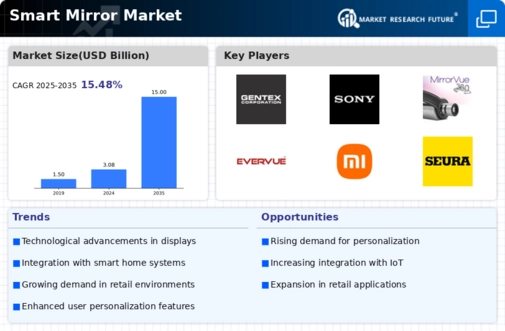
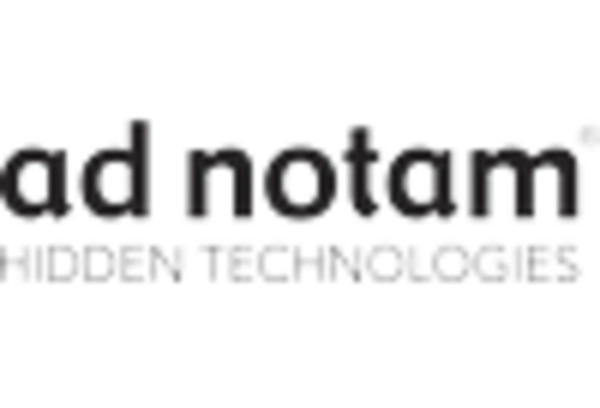
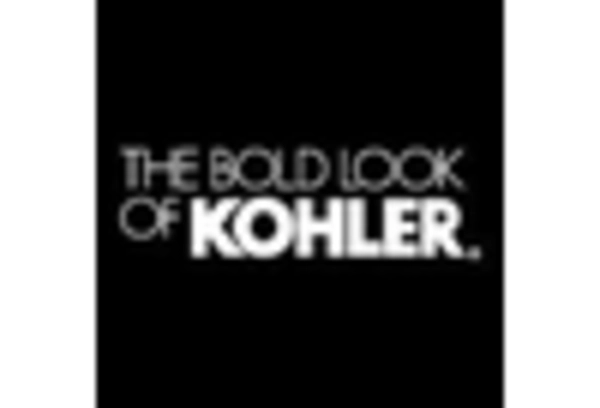
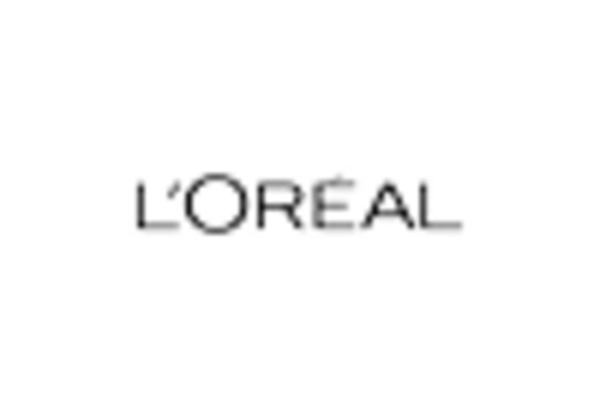
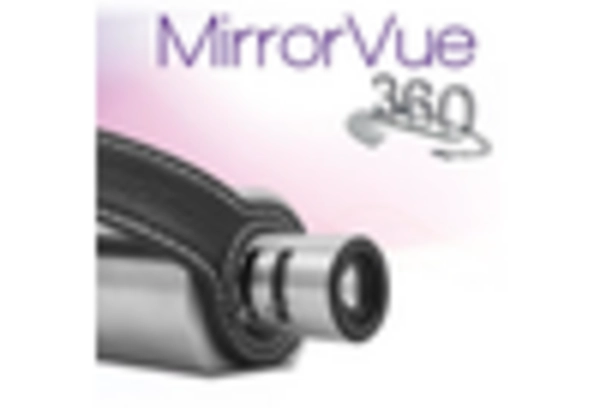
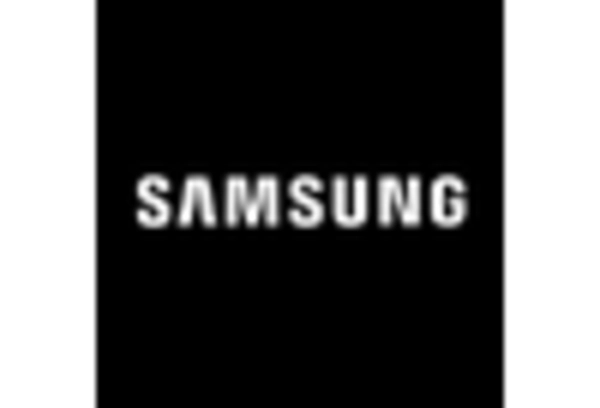
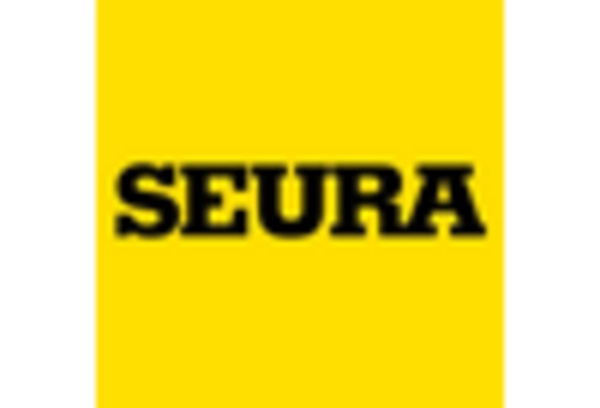









Leave a Comment